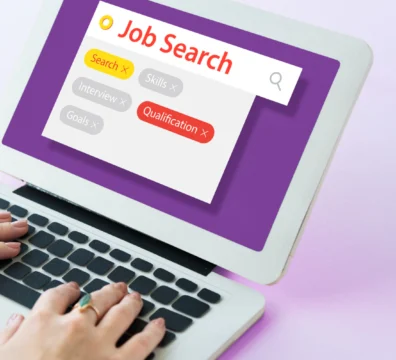The HR team is an integral part of a company, and they play multiple roles- from recruitment to payroll management to maintaining daily business operations.
Thus, making life easy for your HR team will increase productivity and better employee satisfaction. Technology can help make HR work more seamless and integrated, saving time and resources.
In a survey of HR professionals, 36% confirmed they don’t have adequate technology or an HR system integration. It leads to employees doing repetitive tasks manually, e.g., handling employee data, payroll, resume screening, etc. This drains their time and energy and affects the overall business performance.
But what can an HR software integration help you with? When to consider them? What is its importance in your company? This article will answer all your questions.
What is HR System Integration?
HR system integration is a comprehensive software package that can automate and simplify your HR-related operations. You can conduct hiring, onboarding, payroll, scheduling, timekeeping, and performance management within one software.
Isn’t it saving your employees’ time and effort?
Instead, they can invest that free time into core HR activities like hiring, retaining employees, and maintaining healthy employee relations. A recent survey discovered that more than half of global businesses are boosting their expenditure on such technologies due to their benefits.
According to a Grand View Research report, the global human resource management market will expand at a CAGR of 12.7% from 2023 to 2030 and reach USD 56.15 billion by 2030. This will be a huge growth experienced by any sector in the upcoming years, where technology will play a significant role.
Some of the most common HRIS integrations are
- Payroll
- Talent acquisition
- Workforce management
- Benefits Administration
- Learning management
- Collaboration and productivity
Before choosing the right solutions, study your company’s unique needs and evaluate your current HRIS. It includes finding all the bottlenecks in its current workflow to understand which activity adds time to overall processes.
An Example of Integration in HRM
Let’s see an example of HRIS integration in HRM to understand how such systems can improve your work culture.
For instance, your organisation has numerous employees with different milestones to celebrate, like birthdays and work anniversaries. It is difficult for organisations to remember them separately. Therefore, you can use an integrated human resource development system to store employee data.
Now, whenever a milestone takes place, the system immediately shares the information with a predefined channel in business communication platforms where everyone can review and respond to the message.
This way, you will never miss out on employees’ special dates and make them feel valued. Research says highly valued candidates are likelier to stay in your company.
Why do you Need an HR System Integration?
Are you tired of using multiple HR and payroll solutions or doing work manually? It’s time to get all-in-one HR solutions. Why? Let’s see the benefits of integrated HR and payroll systems in your organisation.
Provides you with a Single Set of Data
Whenever you use multiple HR systems, chances of data replication increase, leading to unnecessary duplications. In contrast, an integrated human resource management system provides you with a single set of updated employee data.
Additionally, any changes to this information will automatically be updated throughout the system. Therefore, you don’t need additional integrations to sync data across multiple systems.
For example, one of your employees’ contracts is terminated, and your HR has entered all the necessary details into the system immediately. This data will be circulated throughout the system without re-entering them everywhere.
Improved Aata Accuracy
Have you switched to automating your manual tasks to avoid human errors? But if you are using multiple systems for that purpose, chances of data inconsistencies remain. Therefore, it is beneficial to get an integrated human resource development system.
With such technology, you can enter data into your system once, which gets updated across all systems in real time.
Saves Time and Money
When all your data are stored at one central location, it reduces costs related to installing and maintaining multiple systems. Additionally, it lowers the time taken in upkeep and troubleshooting them or manually handling HR operations.
Altogether, they free up your time for core HR responsibilities and save unnecessary expenses.
Efficiency in Reporting and Analytics
One of the biggest challenges of HR teams with multiple systems is data analysis and systematic reporting. You must gather data from multiple systems, export them into another tool, and generate reports. Altogether, this is time-consuming and is highly prone to errors.
On the other hand, most integrated systems have an inbuilt reporting and analytics tool that helps you generate reports in a few clicks. Furthermore, you save time analysing data, identifying trends, and taking required actions.
Makes Compliance Much Easier
Some form of regulation binds every department of your company. While company regulations are still in your hands, maintaining legal and government laws is mandatory for the HR team.
However, an HR system integration can help HRs fulfil their obligations by reducing manual tasks and the risk of errors. Additionally, some systems may provide an audit trail of compliance activities within your organisation.
Ease of Data Access
HR system integration allows employees to access their data from anywhere. Additionally, they don’t have to switch between applications or bother others whenever they need certain information. This saves their time and allows them to focus on strategic activities for better talent acquisition.
How do you Integrate a Program into Your HRIS?
There are multiple ways of HRIS integration, but we mainly use custom integration, native integration, and iPaaS providers.
Custom Integration
In the case of custom integration, the companies are responsible for developing an integration between a software tool and your HRIS using their API platforms.
Even though it is a highly personalised method of integration, small businesses without proper IT teams may face difficulty as platforms evolve.
Native Integration
Some HRIS providers collaborate with software companies to offer pre-built integrations for your organisation. These partnerships result in more intuitive and stable integrations as they constantly update and maintain them. However, you may need to pay an additional fee for these facilities.
iPaaS Provider
An iPaaS or integration platform as a service provider helps you build and maintain its integrations on the company’s behalf. It is an excellent solution for companies without dedicated development or IT teams. However, configuring integrations with such vendors can be time-consuming and incur additional expenses.
How can 6 Pence Enhance Your HR System Integration?
In conclusion, an HR system integration is an excellent tool for your HR team. They can save time and resources, prevent data errors, and increase overall productivity.
If you want to reduce your HR department’s workload without compromising work quality, it’s time to connect with 6 Pence. We are one of the leading staff outsourcing agencies in the GCC, with offices in Bahrain, Oman, Iraq, and Dubai.
We provide end-to-end staffing solutions, and our business partners and their employees get access to our cutting-edge 24/7 HR e-service portal. This allows the employees and employers to access any documentation at any time. To learn more, connect with us today!
Also Read : A Complete Guide to Prepare for a Job Interview
Frequently Asked Questions
What is HR systems integration?
HR systems integration is a software solution that merges all HR activities for maximum efficiency. It helps the HR team maintain accuracy, enables greater automation, eliminates error and data reputation, and consistently ensures all systems management.
What are the four levels of integration in HRM?
The four levels of integration in HRM are administrative linkages, one-way linkages, two-way linkages, and integrative linkages.
What are integration strategies?
The common integration strategies for HR tools include native integration and custom integration.




































































































